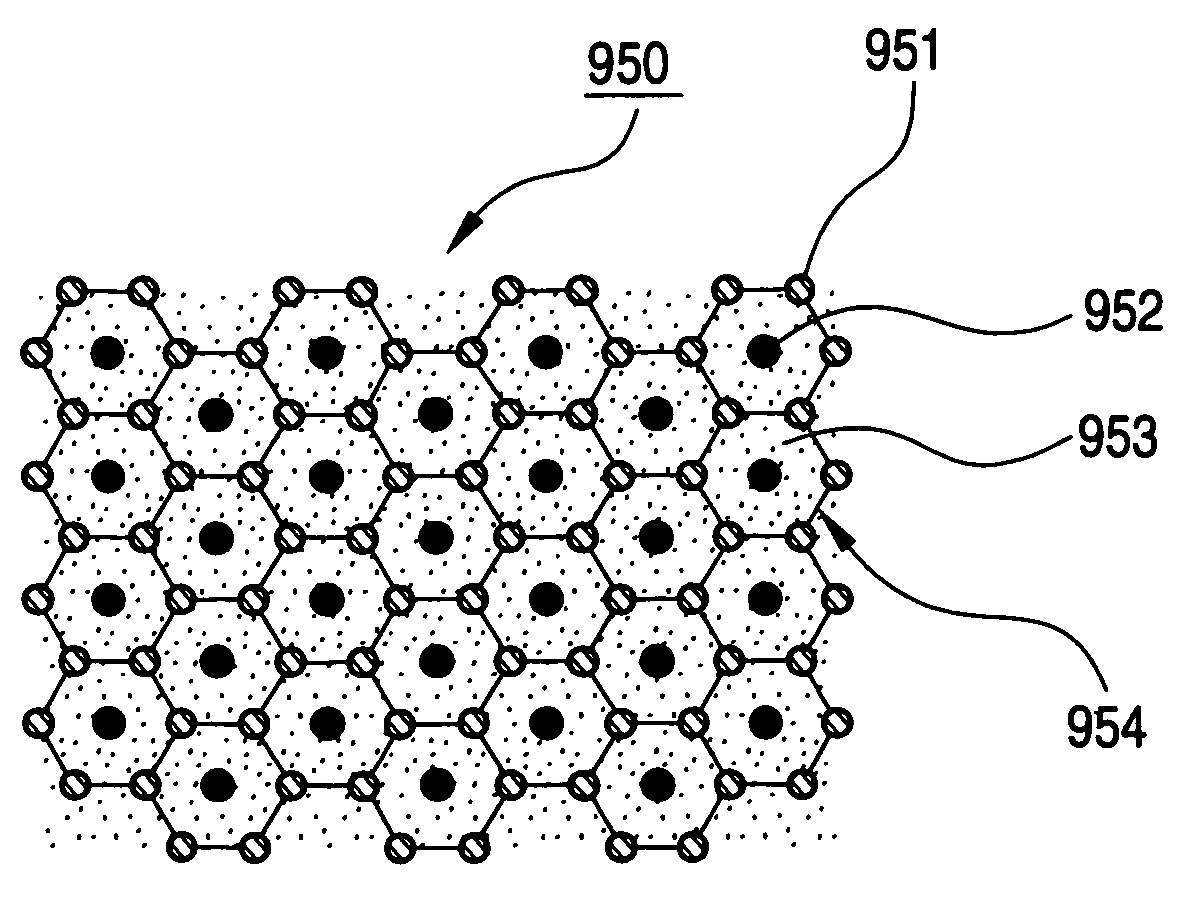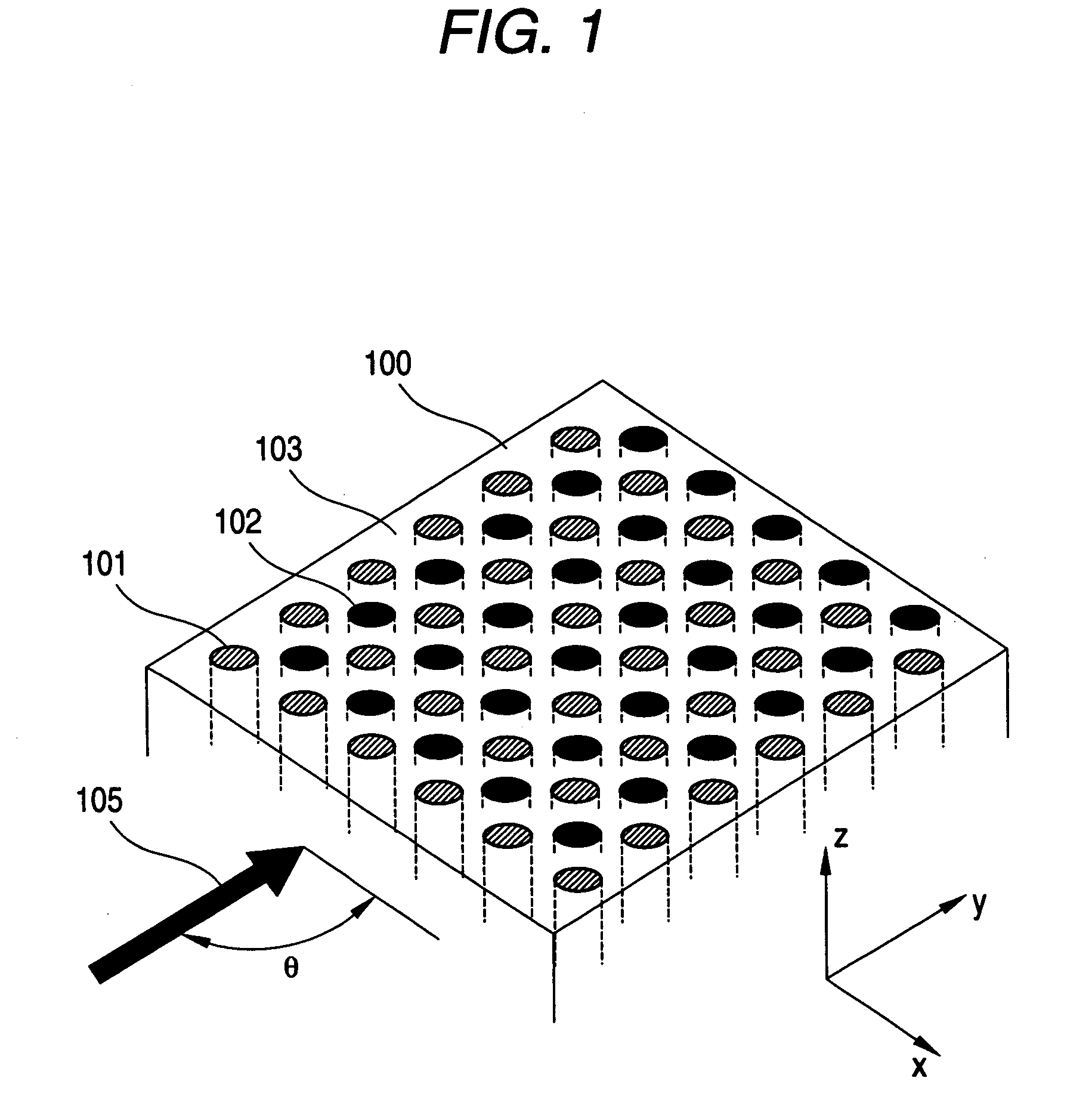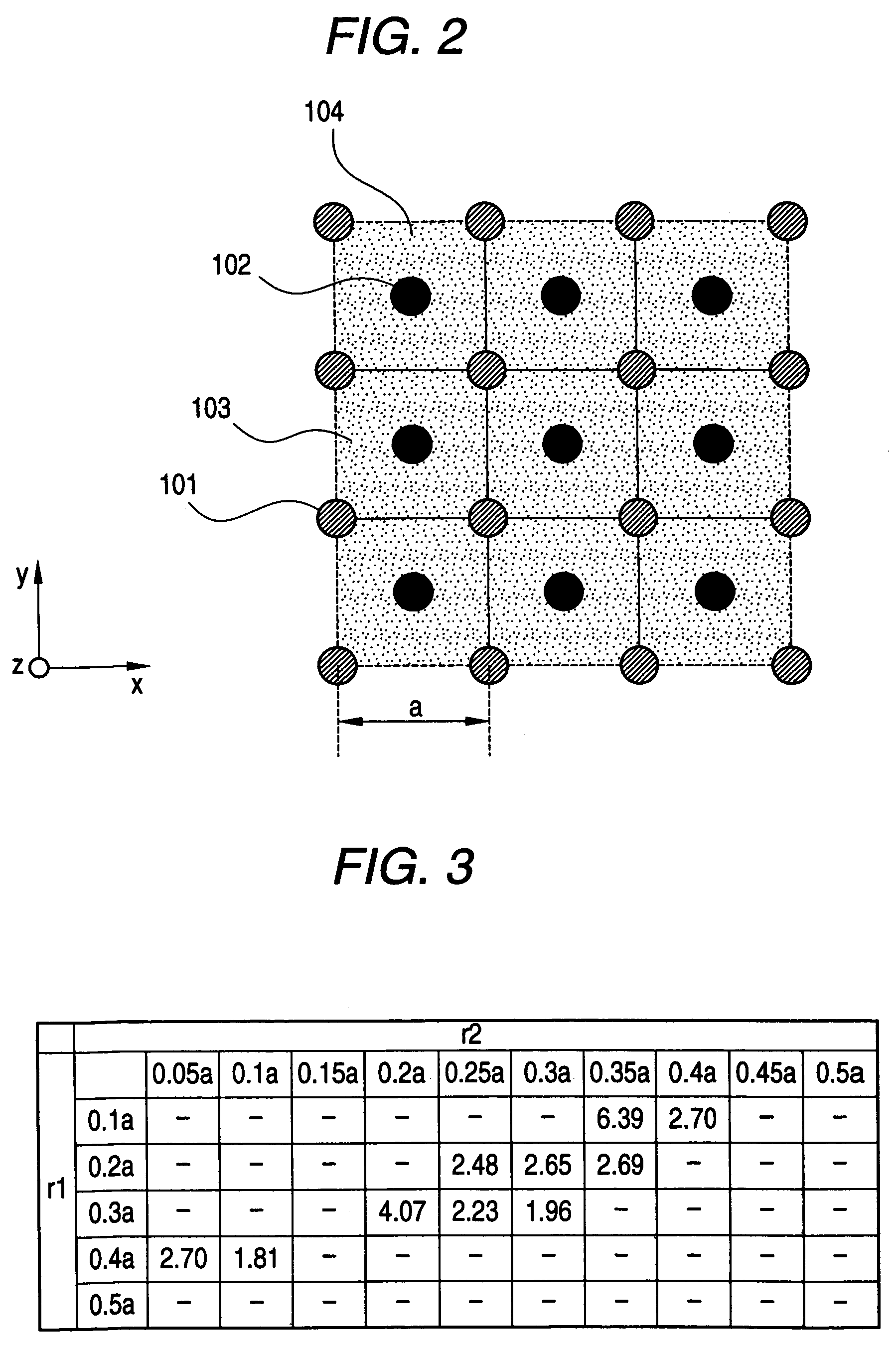Two-dimensional photonic crystal, and waveguide and resonator using the same
a waveguide and waveguide technology, applied in waveguide type devices, instruments, cladded optical fibres, etc., can solve the problems of difficult production, difficult preparation of photonic crystals, and inability to maintain three-dimensional periodical structure, etc., and achieve the effect of easy preparation
- Summary
- Abstract
- Description
- Claims
- Application Information
AI Technical Summary
Benefits of technology
Problems solved by technology
Method used
Image
Examples
examples
[0057]In the following, the photonic crystal of the present embodiment will be explained by specific examples.
first example
[0058]At first there will be explained a first example. In a photonic crystal 100 in the first example, a portion where the first cylindrical structural member 101 exists as the first dielectric area and a portion where the second cylindrical structural member 102 exists as the second dielectric area are vacant and are constituted by air. Therefore the first cylindrical structural member 101 and the second cylindrical structural member 102 have relative dielectric constants ∈1=∈2=1.0. Also the third dielectric area 103 is constituted of a material having a relative dielectric constant ∈3 of 10.4.
[0059]In the first example, a width of the complete band gap was calculated by a simulation conducted by varying the radius r1 of the first cylindrical structural member 101 and the radium r2 of the second cylindrical structural member 102. More specifically, the simulation was conducted by changing the cylindrical radius r1 and the cylindrical radius r2 respectively within a range of 0.1a t...
second example
[0064]In the following, there will be explained a second example. In a photonic crystal 100 in the second example, the first cylindrical structural member 101 constituting a first dielectric area is constituted of a material having a relative dielectric constant ∈1=10, while the second cylindrical structural member 102 has a radius r2 same as a radius r1 of the first cylindrical structural member 101. Also the third dielectric area 103 is vacant and is constituted by air. Therefore the third dielectric area 103 has a relative dielectric constant ∈3=1.0.
[0065]In the second example, a width of the complete band gap was calculated by a simulation conducted by varying the radius r1 of the first cylindrical structural member 101 and the radium r2 of the second cylindrical structural member 102. More specifically, the simulation was conducted by changing the cylindrical radius r1 (=cylindrical radius r2) within a range of 0.2 a to 0.3 a and by changing the relative dielectric constant ∈2 ...
PUM
 Login to View More
Login to View More Abstract
Description
Claims
Application Information
 Login to View More
Login to View More - R&D
- Intellectual Property
- Life Sciences
- Materials
- Tech Scout
- Unparalleled Data Quality
- Higher Quality Content
- 60% Fewer Hallucinations
Browse by: Latest US Patents, China's latest patents, Technical Efficacy Thesaurus, Application Domain, Technology Topic, Popular Technical Reports.
© 2025 PatSnap. All rights reserved.Legal|Privacy policy|Modern Slavery Act Transparency Statement|Sitemap|About US| Contact US: help@patsnap.com



